Trumpet mushrooms
2 years ago · Updated 6 months ago
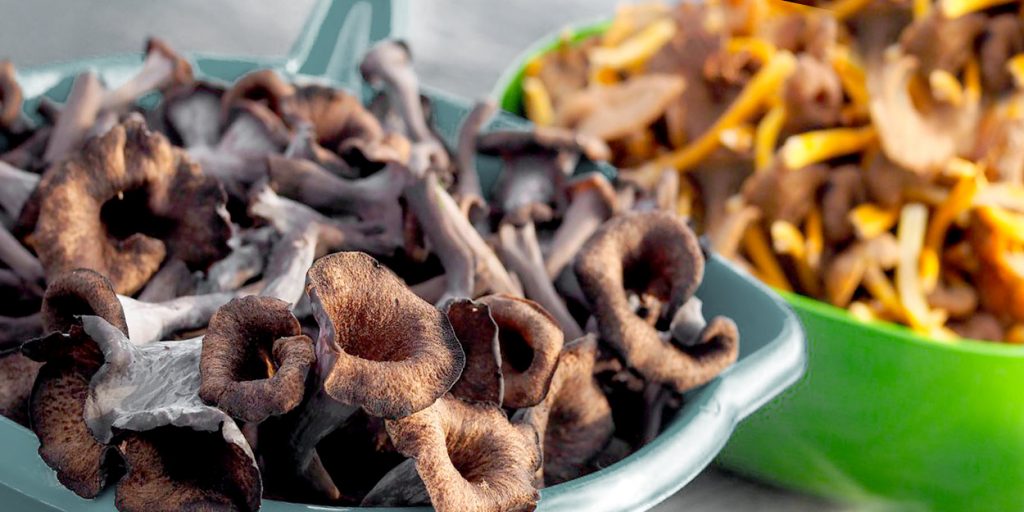
- We tell you how many there are and what the differences are between the species of trumpet mushrooms
- What is Cratherellus?
- What is the difference between Cratherellus and Cantharellus?
- Benefits of edible trumpet mushrooms
- Nutritional properties of wood trumpets
- Where to find trumpet mushrooms. Cratherellus and Cantharellus
- How to identify trumpet mushrooms
- Differences between trumpet mushrooms, Cratherellus, and Cantharellus
- How many types of trumpet mushrooms are there?
- Tips for cleaning trumpet mushrooms
- Culinary uses of black trumpet mushrooms
- Trumpet mushrooms. Recipes
We tell you how many there are and what the differences are between the species of trumpet mushrooms
In the fascinating world of edible mushrooms, there are different varieties of trumpet mushrooms that are highly prized in gastronomy. Among them are Cratherellus, Cantharellus, and other types of trumpet mushrooms that delight even the most discerning palates.
In this article, we will explore the different types of trumpet mushrooms, how to identify them, their characteristics, culinary uses, and nutritional benefits. In addition, we will provide valuable tips on how to harvest, clean, store, and cook these delicious trumpet mushrooms.
What is Cratherellus?
Cratherellus is a genus of mushrooms that includes several species known for their trumpet shape and unique flavor. These mushrooms typically have a funnel-shaped cap and a color ranging from yellow to deep orange. Some popular species of Cratherellus include Cratherellus cornucopioides, known as the black trumpet mushroom, and Cratherellus lutescens, also called the yellow chanterelle.
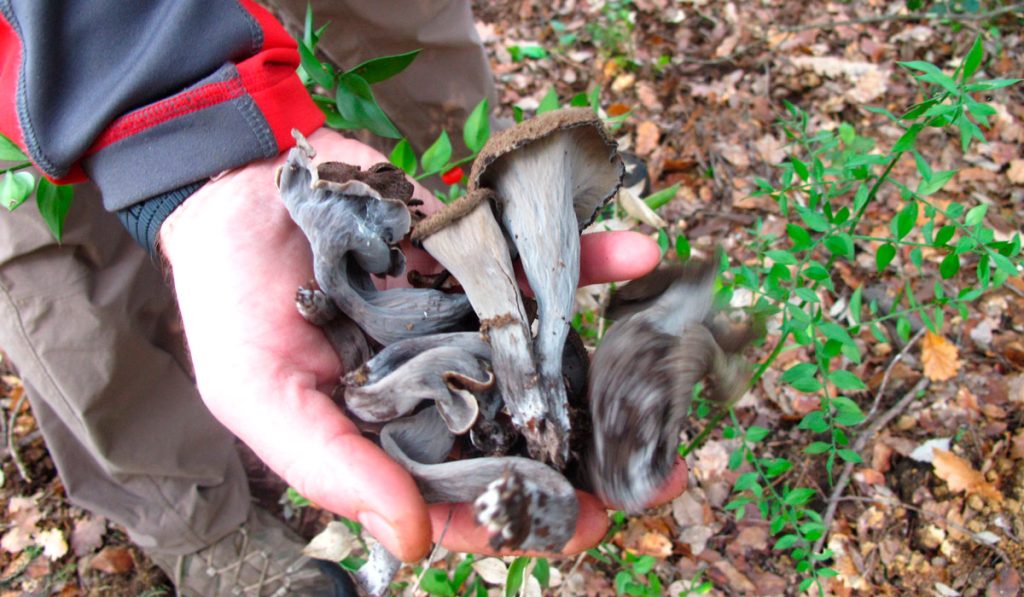
How to identify Cantharellus mushrooms?
Cantharellus is another genus of mushrooms that are distinguished by their trumpet shape. These mushrooms have a shallow funnel-shaped cap and a fleshy appearance. A well-known species of Cantharellus is Cantharellus cibarius, known as the chanterelle mushroom. It is characterized by its delicate flavor and fruity aroma.
What is the difference between Cratherellus and Cantharellus?
Although Cratherellus and Cantharellus are both trumpet-shaped mushrooms, there are a few distinctive differences between them. In general, Cratherellus tends to have a deeper cap and a fleshier texture compared to Cantharellus. In addition, the color of Cratherellus can vary from yellow to deep black, while Cantharellus is known for its bright yellow color.
Are trumpet mushrooms edible?
Both Cratherellus and Cantharellus are edible mushrooms and are highly prized in cooking. Their delicate flavor, meaty texture, and unique aroma make them popular ingredients in many gourmet recipes. However, it is essential to have the proper knowledge to identify and distinguish edible species from inedible ones.
Benefits of edible trumpet mushrooms
In addition to their exquisite flavor, edible trumpet mushrooms offer several health benefits. They are an excellent source of protein, vitamins, and essential minerals, such as potassium, phosphorus, and iron. They also contain antioxidants that can help strengthen the immune system and fight free radicals in the body.
Nutritional properties of wood trumpets
Trumpets are low in calories and fat, making them a healthy option to include in a balanced diet. They are rich in dietary fiber, which promotes digestion and helps maintain a healthy digestive system. In addition, they contain bioactive compounds that may have anti-inflammatory effects and improve cardiovascular health.
Where to find trumpet mushrooms. Cratherellus and Cantharellus
For mushroom picking enthusiasts, knowing where to find Cratherellus and Cantharellus in the wild is crucial. These mushrooms usually grow in moist forests and areas with well-drained soil. They can be found in coniferous forests, mixed forests, and areas with shrubby vegetation.
However, it is always important to have the proper knowledge for accurate identification and to avoid picking them in protected areas or where it is prohibited.
How to identify trumpet mushrooms
Correct identification of trumpet mushrooms is essential to ensure their safety and avoid consuming inedible or poisonous species. Some common characteristics of trumpets include their trumpet shape, shallow cap, decurrent gills or folds, and distinctive color.
However, it is always recommended to consult identification guides, participate in mycology groups, or seek the assistance of experts for accurate identification.
Where can edible trumpet mushrooms be found?
Edible trumpet mushrooms, such as Cratherellus and Cantharellus, can be found in several regions of the world with suitable climates. Some areas known to be ideal habitats for these mushrooms include the forests of Europe, North America, and Asia.
If you are interested in picking mushrooms in the wild, be sure to research local species and follow local regulations regarding mushroom picking.
How to harvest black trumpet mushrooms in the wild
Harvesting black trumpet mushrooms in the wild requires caution and knowledge. It is important to harvest only fully mature specimens and avoid damaging the underground mycelium to allow the mushroom to regenerate.
Use knives or scissors to cut the mushrooms instead of pulling them out. In addition, always make sure to harvest black trumpet mushrooms in uncontaminated areas and comply with local regulations.
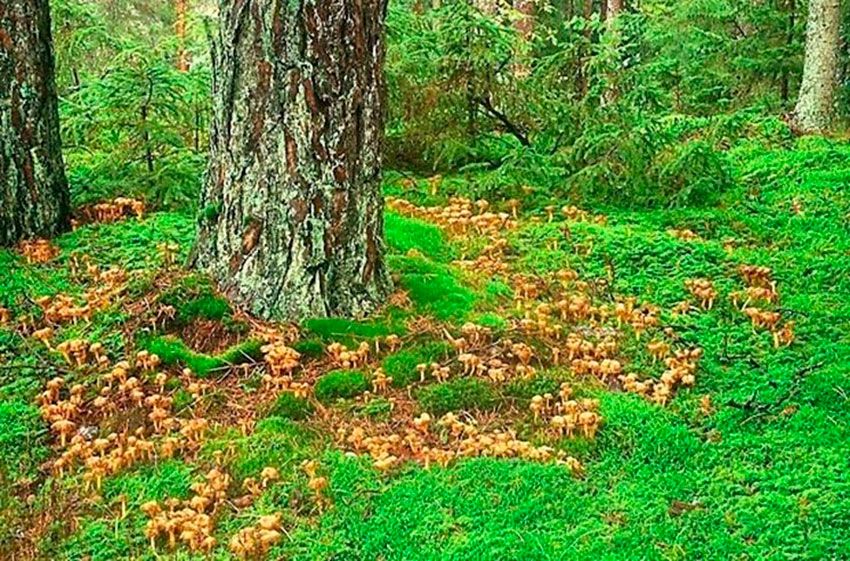
Precautions when harvesting black trumpet mushrooms
When picking Cantharellus, it is essential to take precautions to avoid confusion with similar toxic or poisonous species. Be sure to familiarize yourself with the distinctive characteristics of Cantharellus and compare them with reliable identification guides.
Always check key characteristics, such as color, trumpet shape, and gills under the cap. If in doubt, it is best to refrain from consuming any mushrooms until they have been accurately identified.
Differences between trumpet mushrooms, Cratherellus, and Cantharellus
Cratherellus and Cantharellus share similarities in their trumpet shape, but also have distinctive differences. Cratherellus tends to have a deeper cap and a fleshier texture, while Cantharellus has a shallower cap and a more delicate appearance.
In addition, the colors can also vary, with Cratherellus being more intense orange and Cantharellus more bright yellow.
How many types of trumpet mushrooms are there?
There are several types of trumpet mushrooms, each with different characteristics and names. Below, I will mention some of the most well-known types of trumpet mushrooms:
Types of craterellus trumpet mushrooms
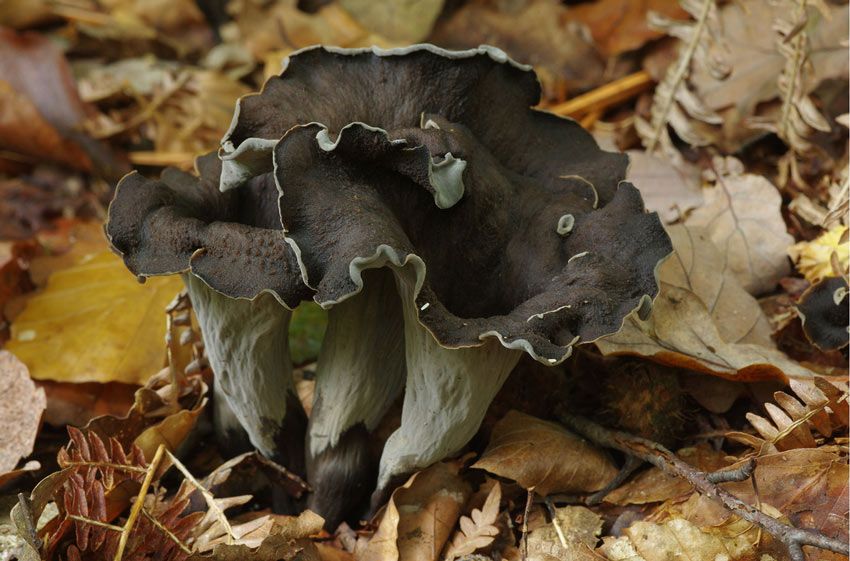
- Black trumpet (Craterellus cornucopioides): This trumpet mushroom is known for its black or dark gray color. It has a distinctive trumpet shape and a shallow cap. Its texture is fleshy and its flavor is intense and earthy. It is highly prized in cooking for its unique flavor and is used in a variety of dishes, from stews to sauces.
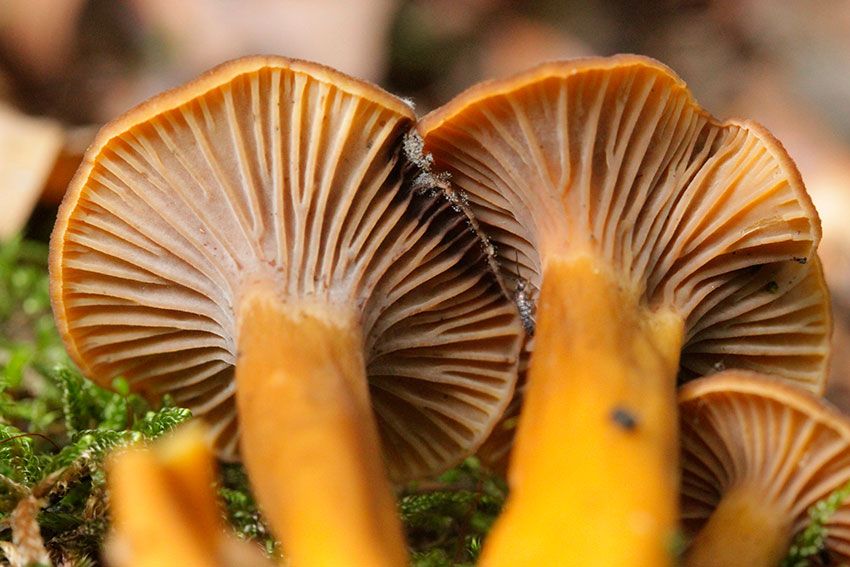
- Craterellus tubaeformis (gray trumpet): also known as the trumpet mushroom, is a trumpet-shaped mushroom characterized by its elongated, tubular shape. Its cap is shallow and its texture is fleshy and firm. This mushroom can vary in color, from light brown to dark brown tones.
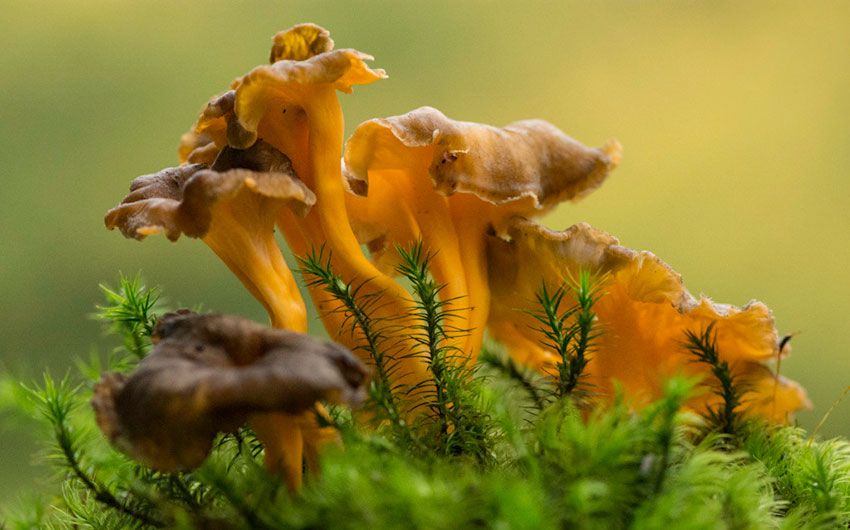
- Camagroc (Craterellus lutescens): Camagroc is a trumpet mushroom similar to Craterellus cornucopioides, but light yellow in color. It has a trumpet shape with a shallow cap and a fleshy texture. Its flavor is mild and delicate, with notes of walnut and almond. It is popular in cooking and used in dishes such as stir-fries, creams, and sauces.
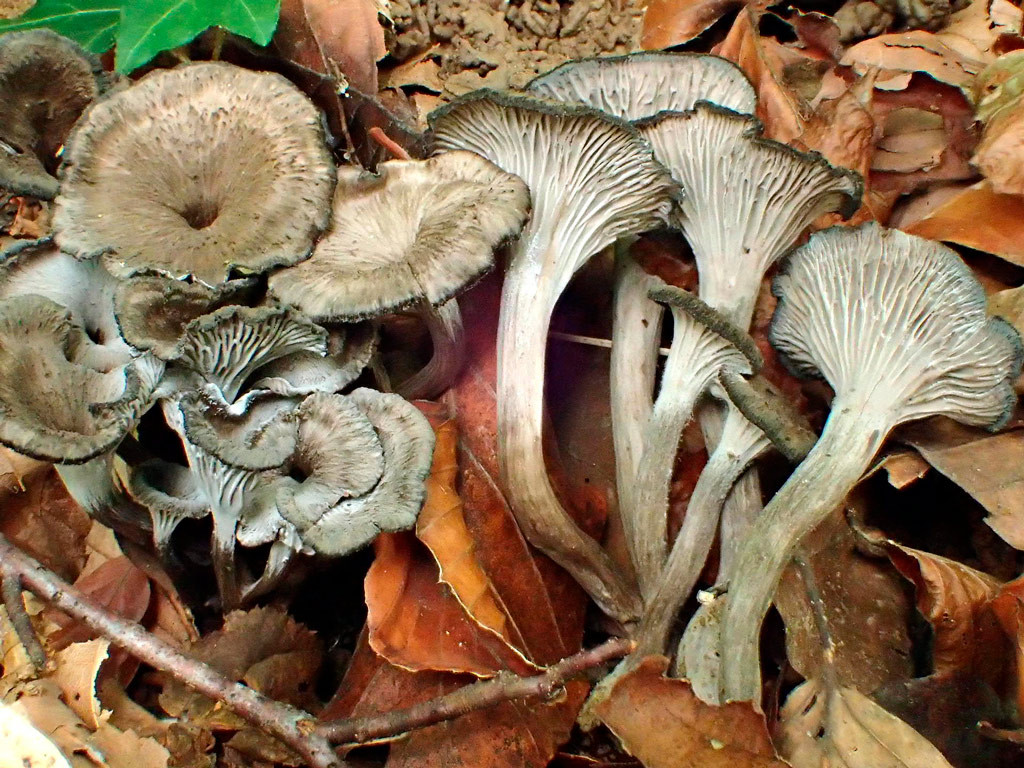
- Craterellus cinereus: Known as the gray trumpet mushroom, this trumpet mushroom has an ash-gray color. It is shaped like a trumpet with a shallow cap and a fleshy texture. Its flavor is mild and earthy. It is used in dishes such as sauces, stews, and stir-fries.
- Cantharellus lutescens f. schizocroica: This variant of Cantharellus lutescens has an intense yellow color. It has a funnel shape with a shallow cap and a delicate texture. Its flavor is mild and fruity, with hints of walnut and almond. It is used in various recipes, such as scrambled eggs, creams, and stir-fries.
- Craterellus melanoxeros: This trumpet-shaped mushroom is distinguished by its jet-black color. It has a trumpet shape with a shallow cap and a fleshy texture. Its flavor is intense and smoky, with earthy and fruity notes. It is used in various culinary preparations, such as stews, sauces, and game dishes.
- Chinese trumpet mushroom (Craterellus sinensis): Native to China, this trumpet-shaped mushroom has a distinctive bluish-black color. It has a funnel shape with a shallow cap and a fleshy texture. Its flavor is intense and smoky, with earthy and fruity notes. It is widely used in Asian cuisine, particularly in stews and stir-fries.li>
Types of cantharellus trumpets
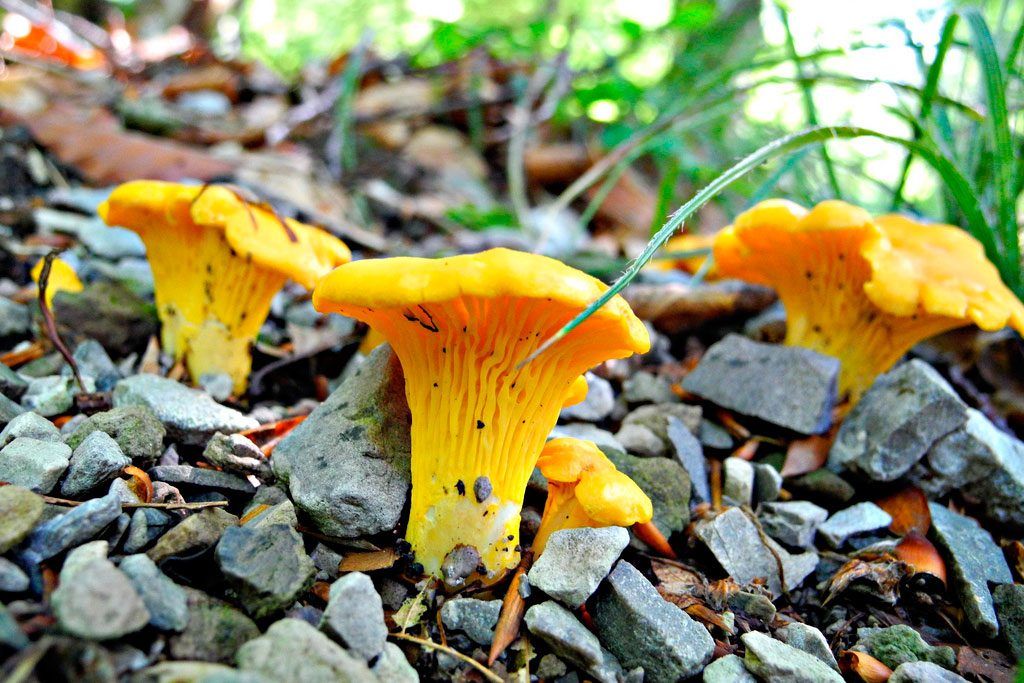
- Girolle (Cantharellus cibarius): Also known as the common chanterelle, this trumpet-shaped mushroom is characterized by its bright yellow color. It is shaped like a trumpet with a shallow cap and a delicate texture. Its flavor is mild, fruity, and slightly peppery. It is highly prized in cooking and is used in various recipes, such as omelets, stir-fries, and risottos.
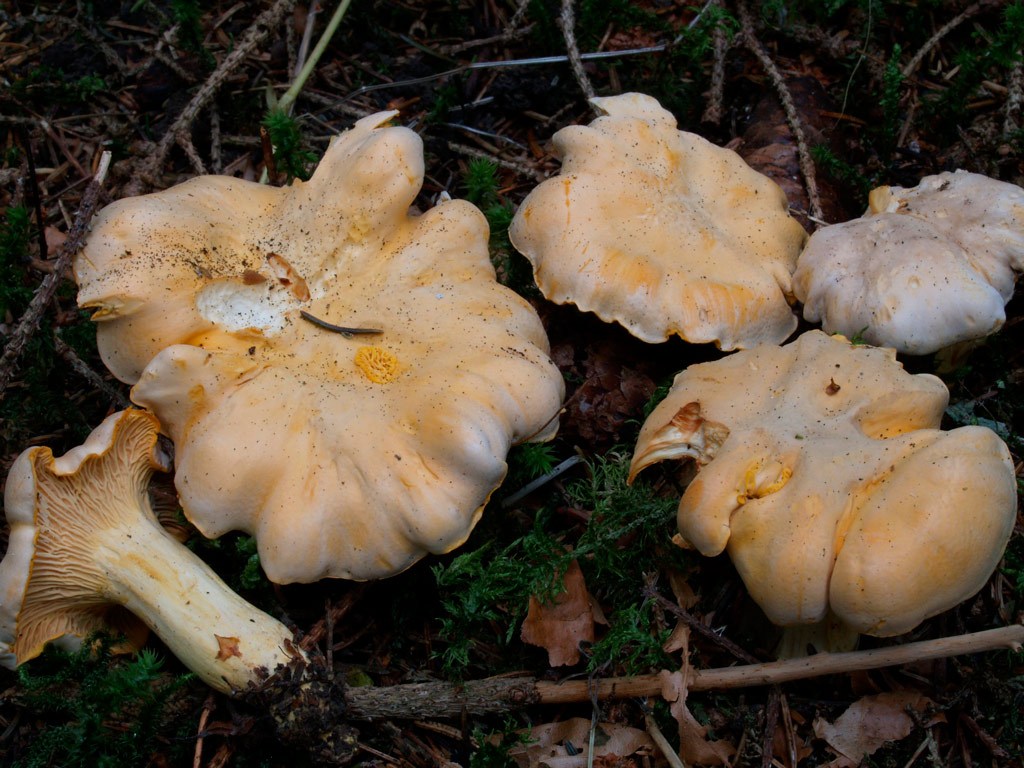
- Cantharellus pallens: This trumpet mushroom is characterized by its pale yellow color. It has a trumpet shape with a shallow cap and a delicate texture. Its flavor is mild and fruity, with hints of nuts. It is used in various culinary preparations, such as omelets, pasta, and risottos.
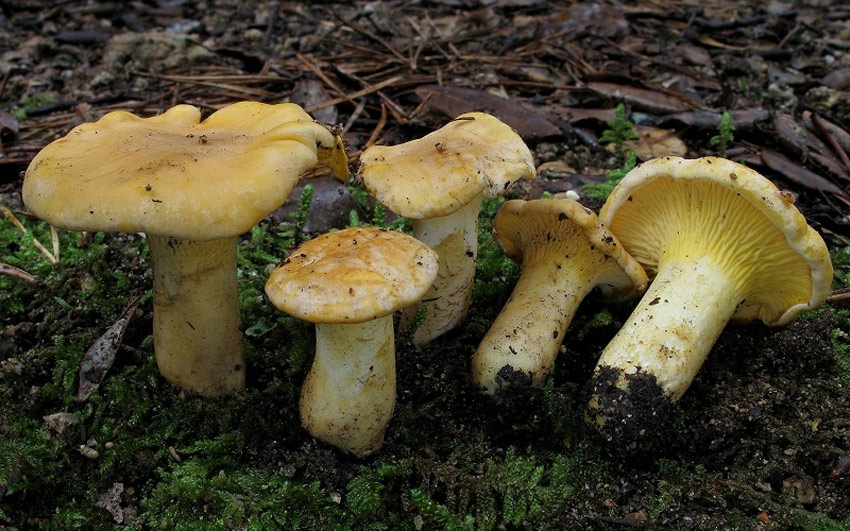
- Cantharellus subpruinosus: This trumpet mushroom is characterized by its pale yellow color with a grayish tint. It has a trumpet shape with a shallow cap and a delicate texture. Its flavor is mild and fruity, with nutty notes. It is used in various dishes, such as omelets, pasta, and stir-fries.
Tips for cleaning trumpet mushrooms
Proper cleaning of trumpet mushrooms is essential before cooking. Due to their trumpet shape, these mushrooms tend to accumulate dirt or debris inside. It is recommended to clean them with a soft brush or damp cloth to remove any visible dirt.
Avoid soaking them in water for long periods of time, as they may become soggy and lose their characteristic texture.
How to store fresh trumpet mushrooms
To keep trumpet mushrooms fresh, it is important to store them properly. It is recommended to wrap them in paper towels or a dry cloth and place them in a paper bag in the refrigerator.
Avoid storing them in airtight plastic bags, as this can cause moisture to build up and speed up spoilage. With this technique, fresh trumpet mushrooms can be kept in good condition for several days.
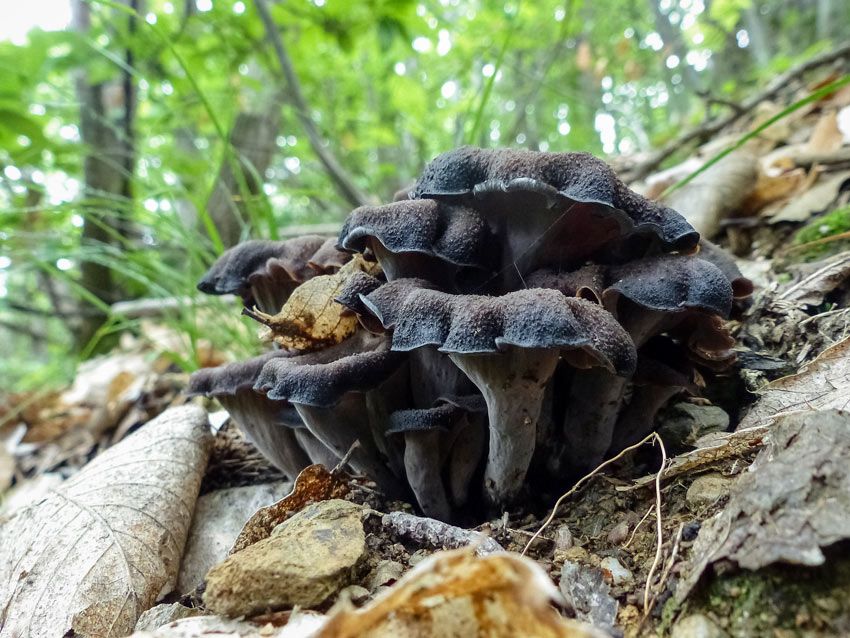
How to store dried trumpet mushrooms
Dried trumpet mushrooms are an excellent option for long-term storage, allowing you to enjoy their flavor and aroma even outside of the picking season. To dry trumpet mushrooms, simply hang them upside down in a warm, well-ventilated place.
Once they are completely dry, store them in airtight containers in a cool, dry place. This way, dried black trumpet mushrooms can be stored for several months or even years.
Culinary uses of black trumpet mushrooms
Cratherellus mushrooms are highly prized in cooking for their unique flavor and meaty texture. These mushrooms are used in a variety of dishes, from stews and risottos to sauces and stir-fries. Their robust flavor pairs well with ingredients such as butter, garlic, fresh herbs, and other mushrooms. Cratherellus mushrooms can also be dried or canned for preservation and use throughout the year.
Trumpet mushrooms. Recipes
Cantharellus or Craterellus mushrooms are a versatile ingredient in cooking and can be used in a wide variety of recipes. From delicious creams and soups to pasta dishes and stir-fries, trumpet mushrooms add a unique flavor and delicate texture to any dish.
Some popular recipes include trumpet risotto, Cantharellus cream with caramelized onions, and Cantharellus sauté with garlic and parsley.

Te pueden interesar